The Epic of Gilgamesh is one of the most thrilling stories one will read from the ancient past. I recall being stuck in a Los Angeles immigration line for hours, trying to contain my frustration with the process and the unprofessionalism of the staff by the way they were treating those of us in line, only to be kept sane by reading this wonderful book. I read the version by Stephen Mitchell called Gilgamesh, which was just such a delight, and I recommend it to anyone. It is believed the story was written around 2900 – 2350 B.C.
In the story, Gilgamesh goes on adventures with his friend Enkidu but is eventually crushed with grief over his friend’s death. He goes on a long quest to discover the secret to eternal life. I won’t say the ending to avoid spoiling the story for anyone who wants to read it. But at one point, Gilgamesh and Enkidu fight the giant Humbaba, who guards a forest.
The image above depicts an original sculpture of Gilgamesh that is located at the Louvre in Parsis, which I took when I was last visiting. Note how Gilgamesh is always depicted holding a Lion in his left hand and a snake in his right hand. Gilgamesh was not a small man but a giant man, perhaps 8 – 9 ft tall. The legend has him as part human and part god.
The thing about Gilgamesh is that he apparently did not exist as a person and is considered by archaeologists to be mere mythology. Although, it is claimed that he might have been inspired by a historical figure who ruled the city-state of Uruk in the year 2800 – 2500 BCE. Let us examine this briefly in terms of the two main pieces of archaeological evidence.
At the Ashmolean Museum in Oxford, England, there is an artefact called the Sumerian Kings List. It contains a list of all the ancient Sumerian kings, which includes the name Gilgamesh. This is the artefact in a photo I took a few years ago.
What is more curious about this object is how archaeologists have chosen to interpret it. These are the actual words on their description piece:
“The Sumerian King List is not history as we would understand it. Parts relating to the earliest kings are largely mythological, although the last 500 years is more accurate. It is also a work of propaganda designed to show that the current kings of Larsa were descended from heroes and demigods of ancient times. Written when local city-states struggled against each other for supremacy, the scribe perhaps intended to show that southern Mesopotamia was always united under a single ruler. There were also times of instability or anarchy, such as the decline of the Akkad dynasty in around 2150 BC, aptly put by the words ‘Who was king? Who was not king?’ Written on this, the prisms fourth side.”
It further states:
“This second side of the Sumerian King List mentions Gilgamesh, hero-king of epic literature and legendary ruler of Uruk. The list combines older versions into what appears to be a continuous genealogical sequence of rulers, although some kings ruled at the same time. Fact and fantasy are blended, particularly in earlier sections mentioning mythical rulers reigning for thousands of years.”
What are we to make of this interpretation? So here we have a list of Kings, some of which are fiction and some of which are real. This seems an odd way to generate a list for a Royal Dynasty. One wonders if, in fact, the long reigns represent many generations of sons taking the same name as their fathers, like Richard I, Richard II, Richard III…..but without the addition of a number, so that the Kings are, in fact, one coronation embodied into multiple generations. But this is speculation on my part.
Yet, here is the curious thing about Gilgamesh—archaeologists have been busy excavating his city for years. This is the City of Uruk, located east of the current Euphrates River in modern Iraq, although it’s located on a now dried-out channel bed since the river has moved.
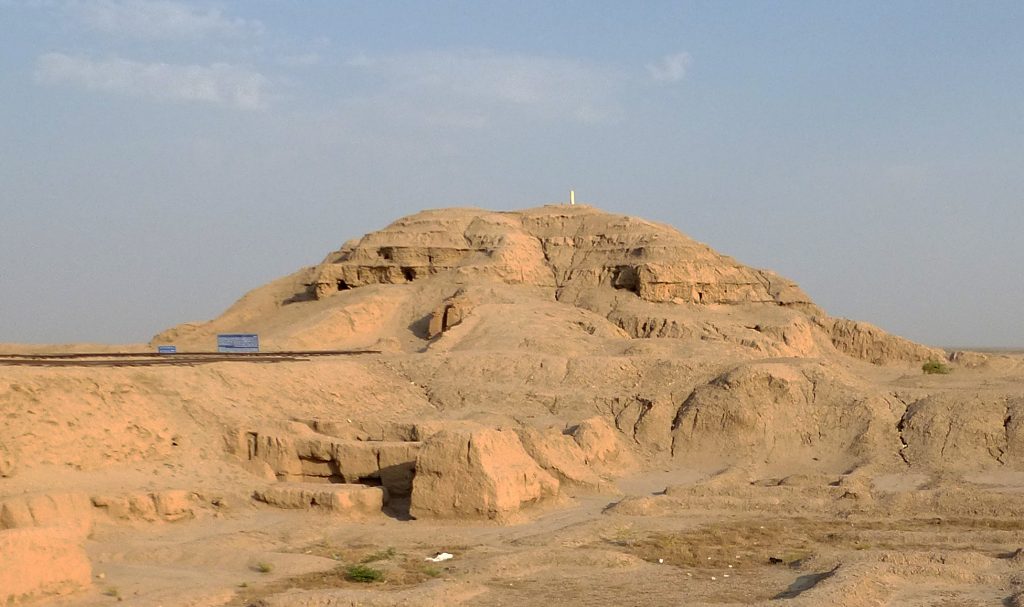
White Temple ziggurat in Uruk, photo tobeytravels (CCBYSA2.0)
According to the ancient Mesopotamian text, Gilgamesh was buried in a unique and elaborate manner. In one account, he was buried beneath the riverbed of the Euphrates River. Then, after his death, the flow of the river was temporarily diverted to construct his tomb, which was then sealed with the water redirected back to its original coarse direction. This is told in the poem called The Death of Gilgamesh or sometimes associated with The Death of Ur-Nammu, dating from the reign of Shulgi of Ur in 2029 – 1982 BCE during the Ur III Period. Here is an account from the World History Encyclopedia:
“The work begins with the failing health of King Gilgamesh, though no cause is given, only that he can no longer eat or drink, stand up or sit down (Segments A-E), suggesting illness or advanced age (according to legend, he reigned for 126 years). Lines 13-19 of Segment A reference the underworld deity Namtar, son of Ereshkigal Queen of the Underworld, who was known as the herald of death.
In Segment F, Gilgamesh dies and arrives in the underworld where he is honored for his many achievements in life. There seems to have been some discussion among the gods concerning his fate (the lines are missing) as Enki, the god of wisdom, asks whether Gilgamesh could not be spared owing to his mother, the goddess Ninsun (also known as Ninsumun), but this cannot be as Gilgamesh, though a demigod, was still mortal and so must share all mortals’ fate.
Segment H gives the famous scene in which the Euphrates River parts after his death and his tomb is built in the riverbed, and in 2003, a German expedition claimed to have found this tomb in the location given in the poem. Segment K ends the work with Gilgamesh again depressed with the knowledge that all living things must die, and his individual grief is addressed as universal by the narrator who then speaks to “all the people” and reminds them that no one truly dies as long as they are remembered by the living.”
On the 29th April 2003, the BBC News ran a curious article titled ‘Gilgamesh Tomb Believed Found’. It said that archaeologists in Iraq believe they may have found the lost tomb of King Gilgamesh. This was a German-led expedition, and the article quoted Jorg Fassbinder, a Geophysicist of the Bavarian Department of Historical Monuments in Munich, as saying, “I don’t want to say definitely it was the grave of King Gilgamesh, but it looks very similar to that described in the epic”. This was especially since in the epic story it described Gilgamesh as having been buried under the Euphrates in a tomb apparently constructed when the waters of the ancient rivers parted after his death.
Fassbinder said, “We found just outside the city an area in the middle of the former Euphrates river, the remains of such a building which could be interpreted as a burial”. The discovery of the ancient city had apparently been made possible “by differences in magnetisation in the soil….the differences between mudbricks and sediments in the Euphrates river gives a very detailed structure”. This results in a magnetogram, which is then digitally mapped to produce a plan of the entire city.
Further, he said, “The most surprising thing was that we found structures already described by Gilgamesh…we covered more than 100 hectares. We have found garden structures and field structures as described in the epic, and we found Babylonian houses”. They also found a sophisticated network of canals. In the article by the BBC, a quote from the archaeologists described it as being like “Venice in the Desert”.
A few snippets have appeared in blog posts over the years, giving more information, but otherwise, very little has appeared in the press ever since that 2003 article, which I find perplexing since work resumed on the site in 2016. I mean, the discovery of a King’s tomb of this importance is as significant as the discovery of the tomb of Tutankhamun by Howard Carter in 1922. Was the report wrong? Were the researchers misquoted? Why has a state of ambiguity and non-information remained ever since? What is the official position of the Department in Munich?
The reports were that the location, orientation and positioning of the discovered tomb appeared to be consistent with that described in the epic. In a report published by the team, the authors stated in reference to magnetic prospection that “In Uruk in 2000 and 2002, the cesium-magnetometer Smartmag SM4G-G was employed in a so-called duo-sensor configuration for the measurement of the total geomagnetic field. This not only doubled the measuring speeds but also provided maximal sensitivity and thus also, information from deeper parts of the soil. This was demonstrated also in the magnetic prospection of tomb chambers.” (Uruk, First City of the Ancient World, H. Becker, M. van Ess, J. Fassbinder, date unknown).
The image below shows the magnetometer survey of the city made by the team, elements of which were published in Magnetometry at Uruk (Iraq): The City of King Gilgamesh (J. W. E. Fassbinder, M. Van Ess, 2005).
Now the statement by the German archaeologists reported to the BBC is very strange. We know that German archaeologists are some of the best in the world, and their work is to be admired. The work of Klaus Schmidt at Gobekli Tepe in Turkey, for example, is outstanding. So, in 2023, I reached out to Jorg Fassbinder, and after several attempts, he kindly replied to me and engaged me in constructive conversation, although I would like to highlight that he is not an archaeologist himself but a geophysicist. To be fair to him, I will quote his exact statement:
“I never claimed nor excavated that we found the grave of Gilgamesh—but unfortunately, we mentioned to find in our magnetogram image a feature which resembles descriptions of the location of the grave of Gilgamesh. In German language we have the ‘Konjunktiv’ such ‘somehow could be’ does not exist in English language and that’s why such a claim ‘Gilgamesh grave was found’ came into the world through an article in the BBC”.
Okay, so fair enough, he is saying the BBC took him out of context. But the misquotes then are pretty criminal if that is the case and where is the retraction and apology from the BBC? I would further note that at some point, I completed a course at Oxford University on Mesopotamian studies, and I tried to engage the main lecturer on the subject of the Gilgamesh tomb, and there was just a reluctance to discuss it, again pointing towards the media getting ahead of themselves. This is possible, of course, but I have also attempted to reach out to a couple of other archaeologists on the subject and have not received a reply.
But here is the thing I find absolutely curious and for which nobody else seems to have noticed. I have looked on the web to see if anyone else has made the same observation as I have, but I can’t see it. So, I may have been the first to find this interesting ‘anomaly’ in the City of Uruk, which I think deserves some attention and an examination by those on the ground. If you go to the City of Uruk on Google Maps and zoom in on it, you are met with an image like this:
If you look at around 6 O’Clock on the image, there is a curious-looking marking on the ground that looks almost like a geoglyph. A geoglyph is a ground feature that often appears in South America or even in parts of Britain associated with ancient cultures produced by durable elements on the landscape such as stone, gravel and earth. Let us zoom in a little closer:
If we zoom in a little closer, re-orient it and then superimpose lines over the image, a curious figure emerges that appears to have a strong correlation to the classical depiction of King Gilgamesh holding the Lion and the snake. Even what appears to be a crown is visible. Is this indeed a geoglyph marking the grave of King Gilgamesh?
Now, it’s possible this is just a case of pareidolia, since the human eye does seem to see shapes and patterns when they are not always there. This is why I have sat on this observation for several years, lacking the ability to go to the site and check it out for myself. It remains pure conjecture. I did show these images to Jorg, and this is what he said, again quoting him in full:
“Geoglyphs can simply not occur or if they have been made by man on fluvial sediments of the Euphrates river will survive max one year. Every rain or flood event of the next years season will have washed away and erased such a feature in the soft clay and salty mud”.
The point made by Jorg is reasonable, especially with seasonal changes, one might expect any such surface structure to be washed away over time. However, that would be on the assumption that the geoglyph is constructed of shallow stones and gravel, which can be easily moved through changing surface conditions. But another possibility we might consider is that the markings are a manifestation of a stone structure buried deeper under the surface. As the surface is washed away by fluvial sediments each year, the structure is renewed by an underground stone so that it always re-appears when the surface dries out. To test this, I examined the structure on Google Earth, and the image certainly appears present going back the last decade and has not washed away, which is suggestive that the marking is caused by a non-surface structure. Only an in-situ investigation would prove or falsify this hypothesis.
Jorg also makes the point that the depiction of Gilgamesh with a Lion is from the Assyrian period, 2000 years later and so would not have been contemporary with the City of Uruk existence. I have not looked into it enough to check if this is the case. But who is to say that the Assyrian depiction was not based on earlier depictions which have not survived or just haven’t been discovered yet?
I find it curious that much of the work on the dig site for King Gilgamesh was stopped in 2003 due to Operation Iraqi Freedom, which began on the 20th March and involved sending many troops into the country. During this turmoil, the main museum in Baghdad was also looted of many artefacts and was not protected. I wonder what was taken from Iraq? I wonder what was removed from the ancient city of Uruk? I would certainly be interested in the opinion of others on whether there was once a Gilgamesh tomb in the City of Uruk, or much like the epic, has this just been a good read?






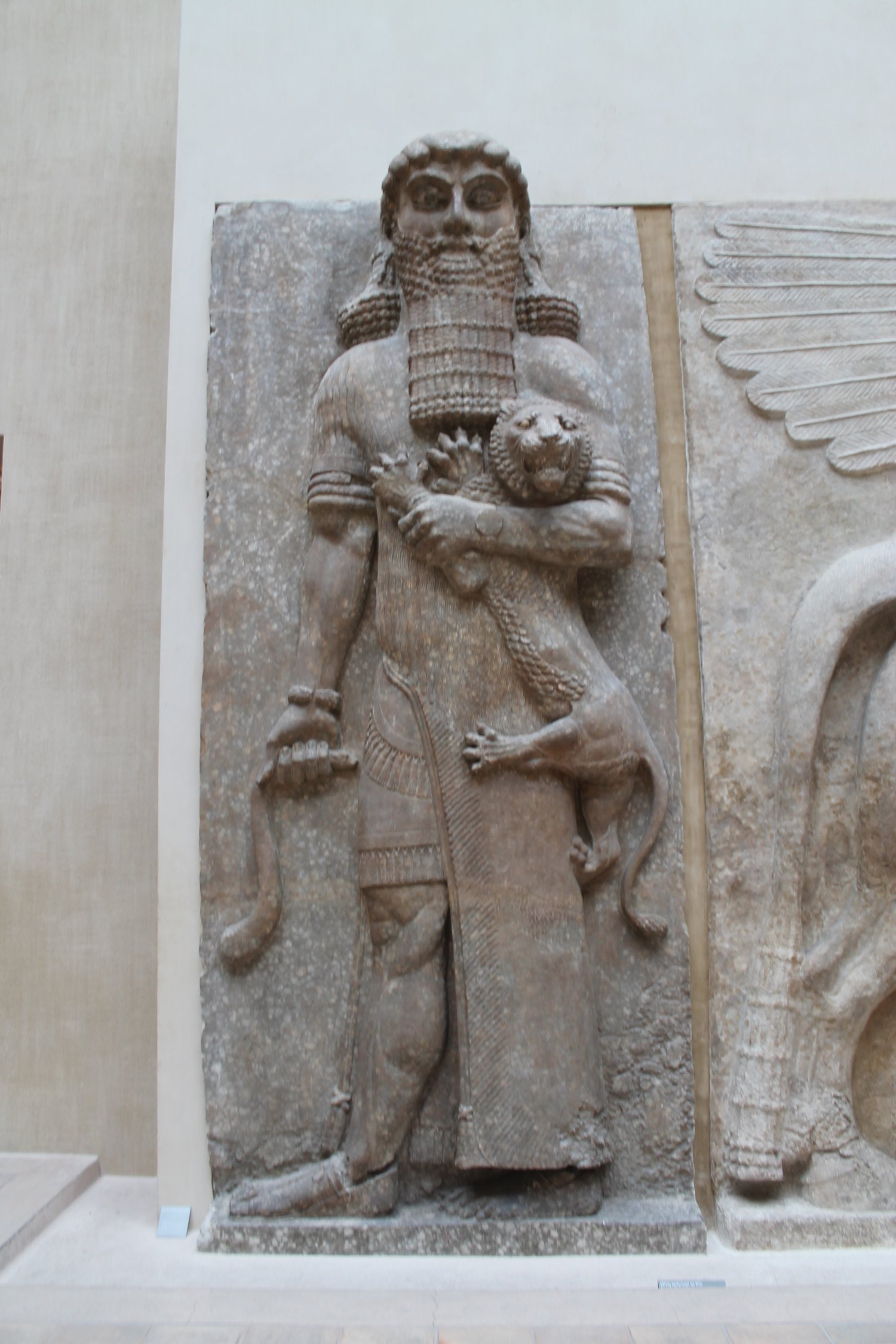

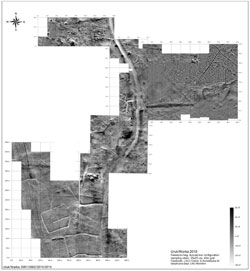
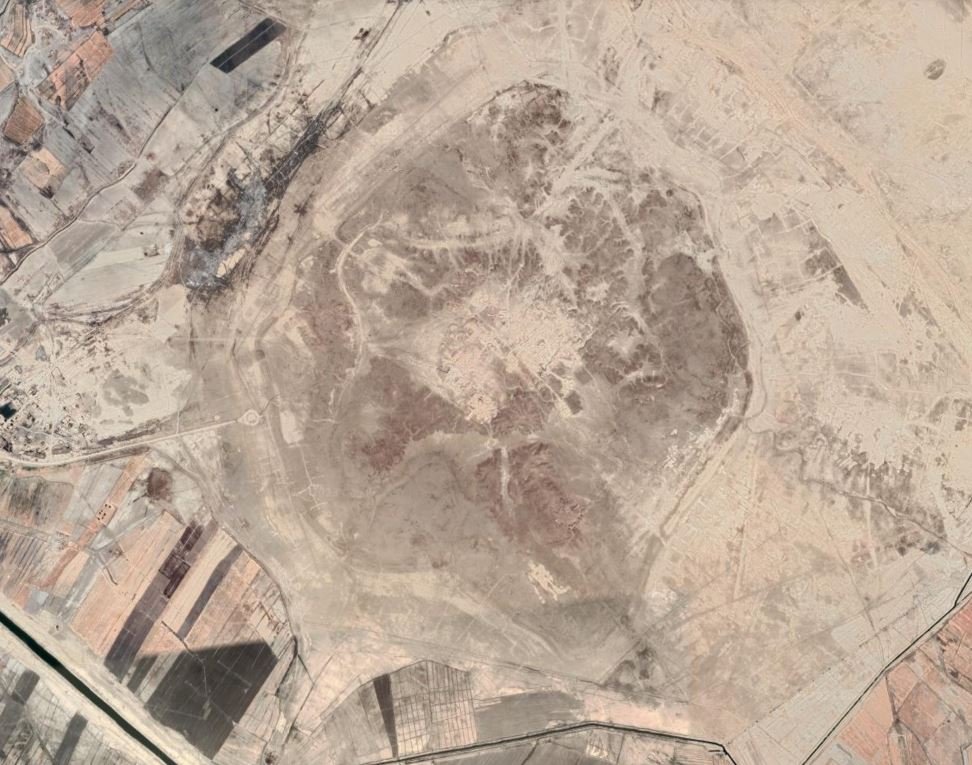

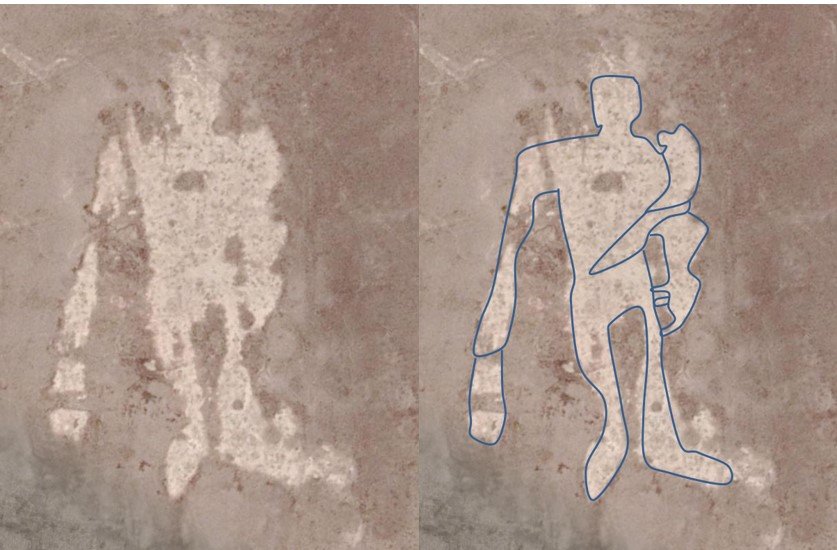
Great hypothesis, until you can get to the actual site and verify, i would love it if it was his tomb.
My fears are that someone already got to it and took any DNA/RNA evidence.
Of course, the evidence free zone of internet speculation, which perhaps sometimes hits near the mark, suspected that the real weapons of mass destruction the iraqi freedom warriors, who stormed the museum, might have been looking for might indeed have come from the tomb of Gilgameshe’s and not the ones the iraqi freedom warriors sold to Saddam…
Great article.
BBC is a spurious source for anything, being as it is, a Zionist-controlled state propaganda apparatus of the British Government, rather than a scientific or impartial organ of public interest and open critique. It tells us what it wants us to accept as facts, not facts themselves. Everything it does is distorted and false. But kudos to you for sifting out the thread that was worth pursing even from such a muddy mire. Such is the state of things.
The geoglyph is a stunning discovery and must be looked into – get Hugh Newman and co onto it! He goes everywhere.
Yes, the timing of the whole illegal and absolutely outrageous invasion of Iraq, which led to the deaths of millions of innocents, the looting of humanity’s richest layers of cultural heritage, all based on utter lies and official disinformation, is a crime that keeps on taking. We have lost 100% of this millennium so far to that narrative, pushed by the war machine that serves Israel and never the nations that actually do all the fighting for them. I bet more than one “royal” family got some mad loot from that whole raid, and I’m not talking about the billions in bullion stolen from Saddam’s treasury. Artifacts, fossils, god knows what bling is now in some rich prick’s dungeon ̶instead of ̶m̶i̶n̶e̶ ̶w̶h̶e̶r̶e̶ ̶i̶t̶ ̶t̶r̶u̶l̶y̶ ̶b̶e̶l̶o̶n̶g̶s̶ being available to the public and available for scientific study. Ahem.
Uruk is credited with the invention of cuneiform writing, one of the earliest known forms of written communication.
– Link shows artist interpretation of Uruk – https://knightstemplar.co/city-of-uruk/
– Ancient seals and reliefs are found throughout world museums. The Morgan Library, NY. – https://www.themorgan.org/collection/ancient-near-eastern-seals-and-tablets
– Wikipedia mentions early attempts to understand the sight by explorers and “archaeologists”. *** Their works might include drawings of the geoglyph area. – The location of Uruk was first noted by Fraser and Ross in 1835; others: William Loftus, Walter Andrae, Edgar James Banks, Julius Jordan, A. Noldeke, Ernst Heinrich, H.J. Lenzen, Jemdat Nadr, J. Schmidt, R.M. Boehmer, Margarete van Ess, Joerg Fassbinder, Helmut Becker.
Bobb needs to calm down and get some sleep. Raving about the BBC, Israel and Zionists makes me think he’s not the most level headed person on the planet and contributes nothing to this discussion.
Actually, numbnuts, you’re the zero here. What did your post contribute? Nothing whatsoever – you’ve simply been triggered by me daring to state what is plainly obvious and indeed entirely relevant, as noted by others’ comments elsewhere on this page, to which I was agreeing.
Mine is an accurate critique of the overtly -indeed, definitively, historically speaking – Zionist regime known as the United Kingdom of Great Britain’s propaganda organ, the British Broadcasting Service, a fountain of bullshit and pure poppycock for a hundred years.
Given the centrality of the Zionist question and its effect through illegal highly destructive debasing and corrupting wars in exactly the region under discussion, as well as the wider middle east and indeed entire fucking planet, if Blackrock is anything to go by, it is plain that this is indeed an incredibly important and suppressed subject. The politics of archaeology and the way in which it is weaponised as well as targeted is an utterly critical dimension of the discussion which any adult can see.
Off you go – or, keep defending the BBC in 2025. I dare you. LOL
You need help, sheesh.
Wow, convincing! I need help, to you. For what? I’m not the fool addicted to government propaganda and bankster-driven narratives. Or do you think BBC is an edgy independent entity with no filters or competing influences? Not entirely controlled by the bank complex? Nope! Straight up truth. Your government loves you and would never lie. About anything! Ever! Especially not just some dusty old ruins in the country they most recently destroyed illegally in a rapacious war that made trillions for arms dealers and murdered millions of civilians. That was to protect you from WMD’s that the head of state had. Whoops – sorry, didn’t have, after all. Oh well. Those lies aside, it wouldn’t ever …
Enjoy your state-driven “news”, then. I’ll be right here for you when you return. Brainwashed idiot.
I just have to say, as an “armchair” archaeologist my entire life, I recognized the proposed geoglyph the moment I saw the un-zoomed overhead photo, and before it was mentioned. The striking similarity to the Lion & Snake representation of Gilgamesh was immediately obvious. In my opinion it’s just too precise to be attributed to pareidolia.
In-situ exploration is definitely warranted, if for nothing less than so it can be dismissed and cease to torment us all. Like the unexplored tomb of Qin Shi Huang they’ve been sitting on for so long.
Indeed, you can even see a face.
You can even see it being there in satellite images from 1984. Definitely seems to be caused by a non-surface structure.
Hey Kelvin, this is what Jorg said to me, “if You follow our publications in the Web of Science – you will see that we already continued our research in Uruk and Iraq by magnetometer survey.
Best regards from Munich
Jorg” I hope they find something but bringing tech to bear on your location would be prudent. Academics also dismiss the age of the gods as mythological in Egypt as well, even though we consider Manetho’s dynastic kings list as fact. Good work and good luck. Jim Vieira
Hi Jim, love your work. From memory, I don’t think they surveyed that particular spot with a magnetometer. Reach out if you can, would love to chat.
This is fascinating! Wondering what the approximate size of the geoglyph is?
Fascinating and enlightening. Particukarly when one reflects upon the message Gilgamesh was given regarding the coming Earth apocalypse or Great Flood. Are THEY hiding something astounding? I have long thought the military charge for ancient technology would be obvious. Particularly given the great drive Germany’s leaders had during WW2, to seize ancient technology and esoteric knowledge. Many countries sent elite military teams to recover artifacts during WW2. Postulting from late 1970s to 2025, we can see a great movement into countries that have ancient empires whithin their borders. Afghanistan, Lebanon, Iraq, Syria, etc. And one of the greatest ancient cultures Egypt or Misr is controled by Field Marshal Abdel Fattah el-Sisi. Now go back to the purge and slaughter of the Americas by Colonial Europe. The knowledge gained and the continuous funding to travel the world and acquire technology and resources approx.600 years ago. Consider as a result of this greed grab, the Age of Enlightenment started in 1685. Industrial Revolution starts 1760. Lots more examples. My theory, the European Colonial oppressors stole stuff that led to the rise of Europe. Then we have to consider the blatant conspiracy or cons-piracy regarding the supression globally of the previous Ages of Human Civilisation. Pre 13000 years ago. And the potential that our Sun is a more volitile star, maybe a G7, and pops off a few massive X Class flares around the half and full marks of the Procession of the Equinox. Then add the inclusion of major comet and meteor action during these points in the Great Cycle. Look at the Hopi knowledge. Its clear to me that we are not only being held back regarding our technological evolution, but also that a true and accurate timeline of Human Evolutionary cycles is hidden. Just take zero point energy as one example of persecuted technology and research. Pattern Pending then Pattern seized by Governments. Particularly the USA. Lots of convolution here you could say. Point is this, Dr Long is very enlightened. Thankyou for adding another to my list. Only recently we were discussing Gilgamesh and the tomb. We wondered why no updates? Why no information? Why dont we have a global panel in place to review and discuss all these amazing discoveries. Why are we the people not interested in living history? Final questions. As we approach the 13000 year mark from the end of the last age of Earth. Why is our global civilisation looking down at our feet, instead of looking up and asking, can we survive the transition to the next Age? Did Atlantis really fail? Or are we the children or survivors of that Great Civilisation? Im hoping Mr Hancock may tell us in his next Series of Ancient Apocalypse. Thankyou for being real in this crazy military controlled human construct of illusion, contrivity and simulacra. Cognative Liberty NOW!
Mike From Around The World who appears once a week on the Paul Begley Show on youtube has mentioned several times over the past few years that giants were found by archaeologists employed by the military who knew where to look (including in an ancient Sumer site as well as in South America), and that some of them were still alive or in a dormant state or being revived. He also said that ancient Sumerian texts having to do with long cycles and our binary star had been retrieved, and that Hitler had also been quite knowledgeable on such topics and had a collection of texts and artifacts which he destroyed. Even our current Pope Francis visited the site of Ur about 3 years ago. One may ask what the reason was for his visit there.
Is it only western culture that disrespects old civilizations by not accepting their histories and call them myths(bullshit).
When you wake up, please check in with your ex-friend the conspiracy snalyst for the rest of the story, there are facts available.
I remember the Polish army was in that area during that time and remember hearing rumors of them flying something big out of there.
The geoglyph may represent a focal point for prayer.
Aincent temples represent gods creation man. Egyptian temples, Solomon temple and now churches represent this old idea. Maybe more geoglyhs to be found representing the different temple doors gilgamesh went through
Very interesting, thank you. Where there is smoke, there’s fire. Especially when scientist, governments and wars are involved.